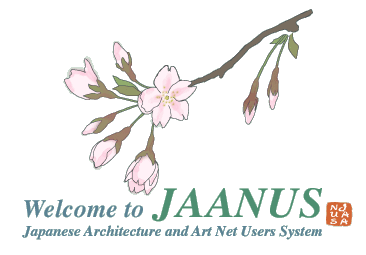 |
 |
| |
Finally,
after twenty years of effort by countless dedicated professionals,
we welcome you to Jaanus, an on-line work-in-progress.
It's user friendly: either use our search engine by entering
your word in the search box on the left and then press "GO",
or search alphabetically and enjoy your journey.
This is not a definitive work. Although every effort has been
made to create as accurate a compilation as possible, new discoveries
will, most likely, complement our endeavor. However, new discoveries
can sometimes negate old findings, facts or myths. Therefore,
should you find discrepancies or errors, let us know as any
corrections can benefit all.
You can e-mail us through the "contact" link. Please
understand that we cannot reply to messages personally or offer
research assistance beyond the contents of this work, although
we will read and consider every message we receive.
Finally, on behalf of the myriad contributors, the endless efforts
of support personnel, the dedication of all, and in memory of
Dr. Mary N. Parent, may our entries assist you in your academic
quest.
The Jaanus Staff
April 2003 |
|
| |
 |
 |
| |
This
dictionary contains approximately 8000 terms related to traditional
Japanese architecture and gardens, painting, sculpture and art-historical
iconography from approximately the 1st century A.D. to the end
of the Edo period (1868). Terms from related fields such as
lacquer, ceramics, textiles and metalwork have been included
where they are considered to be of general interest and/or impact
on the principal fields of architecture, painting and sculpture.
These definitions are not translations from any one Japanese
monolingual dictionary, but have been collated from a range
of specialist sources and scholarly publications, and from direct
observation and study. Many have never before been defined in
English.
The entries are arranged in alphabetical order: the romanized
term is followed by Japanese characters and a definition in
English. All Japanese words included within the definition are
romanized, and provided with Japanese characters. An asterisk
'*' before any word indicates a cross-reference to a separate
entry. Basically, the Hepburn system of romanization has been
used, although we follow the hiragana notation system for long
vowels (ex. tourou rather than toro) due to the limitation of
HTML language. We also have a separate illustrative file to
show some special Kanji (Chinese characters) that are not supported
by most Japanese word processors. Japanese and other non-English
words, with the exception of proper names and entry headings,
appear in italics. Different meanings or usages of the same
term are listed numerically; 1, 2, 3 etc., but terms whose meaning
differs in art history and architecture are treated as separate
dictionary entries. |
|
| |
|

